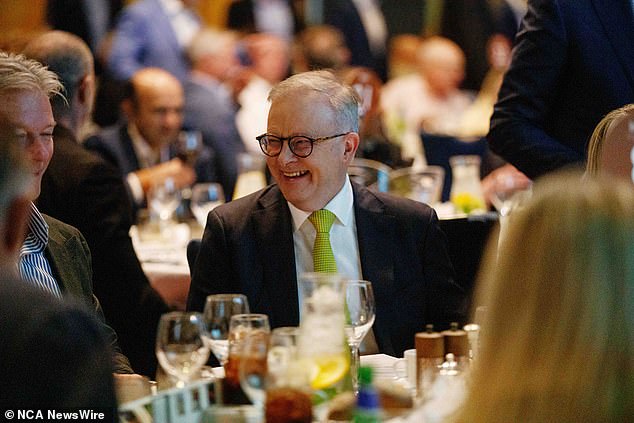Major blow for Albo with Aussie economy growing at slowest pace in more than three decades
- Economy grew by only 1 percent
The Australian economy is now growing at its slowest pace since the early 1990s recession, barring a pandemic.
Gross domestic product grew by just 1 percent in the year to June, well below the long-term average of 3 percent.
Outside of the 2020 pandemic, this was the slowest annual pace of economic growth since the 1991 recession, the last economic downturn caused by aggressive rate hikes.
Australia is not yet in a technical recession (two consecutive quarters of economic contraction).
However, the country has been in per capita recession since mid-2023, with output per Australian shrinking by 1.5 percent in the last budget year.
While productivity grew by a weak 0.5 percent over the year, it fell by 0.8 percent over three months in the June quarter.
The cost of living crisis is truly bad, with household spending down 0.2 per cent, the worst decline since mid-2021, when the Delta outbreak led to lockdowns in Sydney and Melbourne.
Australia is also facing a record number of corporate bankruptcies, following the Reserve Bank’s 13 rate hikes in 2022 and 2023.
The Australian economy is now growing at its slowest pace since the recession of the early 1990s
Prime Minister Anthony Albanese’s Labor government faces a vote in May next year, while Reserve Bank Governor Michele Bullock last month ruled out cutting interest rates before Christmas.
Variable mortgage terms have risen 68 per cent since May 2022, with the RBA cash rate standing at 4.35 per cent, a 12-year high.
Julia Gillard lost her Labor majority in 2010 as a result of the global financial crisis, even though annual economic growth was at a much more respectable 3.3 percent thanks to large-scale stimulus programs.
Even in better economic times, she was forced to form a minority government with the Greens and independents, while opinion polls indicate a similar fate awaits Albania’s government in 2025.
The weakness of economic activity has made it difficult for Labour governments to be re-elected. Paul Keating only won the 1993 election because his Liberal opponent John Hewson had proposed a hated 15 per cent GST.
While the annual growth rate of 1 percent was the worst since 1991, it was slightly better than the Reserve Bank’s forecast of 0.9 percent in its August monetary policy statement.
Financial markets had also expected a 0.9 percent increase.

Prime Minister Anthony Albanese’s Labor government is expected to go to the polls in May next year, while Reserve Bank Governor Michele Bullock last month ruled out rate cuts before Christmas.
